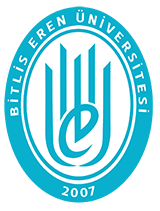Assessment of Ergonomic Risk Factors for Sustainable Agricultural Practices Based on Picture Fuzzy Lodeci-Artasi Approach
Abstract
The implementation of proactive risk management from an occupational health and safety (OHS) perspective is of paramount importance in ensuring sustainable production and enhancing work efficiency among employees. This paper aims to develop an innovative occupational health and safety risk assessment (OHSRA) model for workers exposed to ergonomic risks during agricultural harvesting operations. The approach to achieving this objective is through the implementation and validation of two innovative methodologies: the LOgarithmic DEcomposition Of Criteria Importance (LODECI) and Alternative Ranking Technique based on Adaptive Standardized Intervals (ARTASI) methods. This study utilized an integrated approach, incorporating LODECI's weighting method and ARTASI's prioritization technique, based on picture fuzzy sets which employs Fine-Kinney risk parameters, to prioritize ergonomic risk factors affecting work-related musculoskeletal disorders (WMSDs). The validation of the proposed model is conducted through a sensitivity and comparative analysis. The research findings indicated that the five most significant hazards in harvesting operations are 〖ERH〗_11 (Land of harvesting area), 〖ERH〗_2 (Repetitive motion), 〖ERH〗_4 (Standing for a long time), 〖ERH〗_12 (Work stress) and 〖ERH〗_9 (Unsuitable climatic conditions), respectively. In finally concluding the paper, discussion is provided of potential future research directions.
Collections

DSpace@BEU by Bitlis Eren University Institutional Repository is licensed under a Creative Commons Attribution-NonCommercial-NoDerivs 4.0 Unported License..













